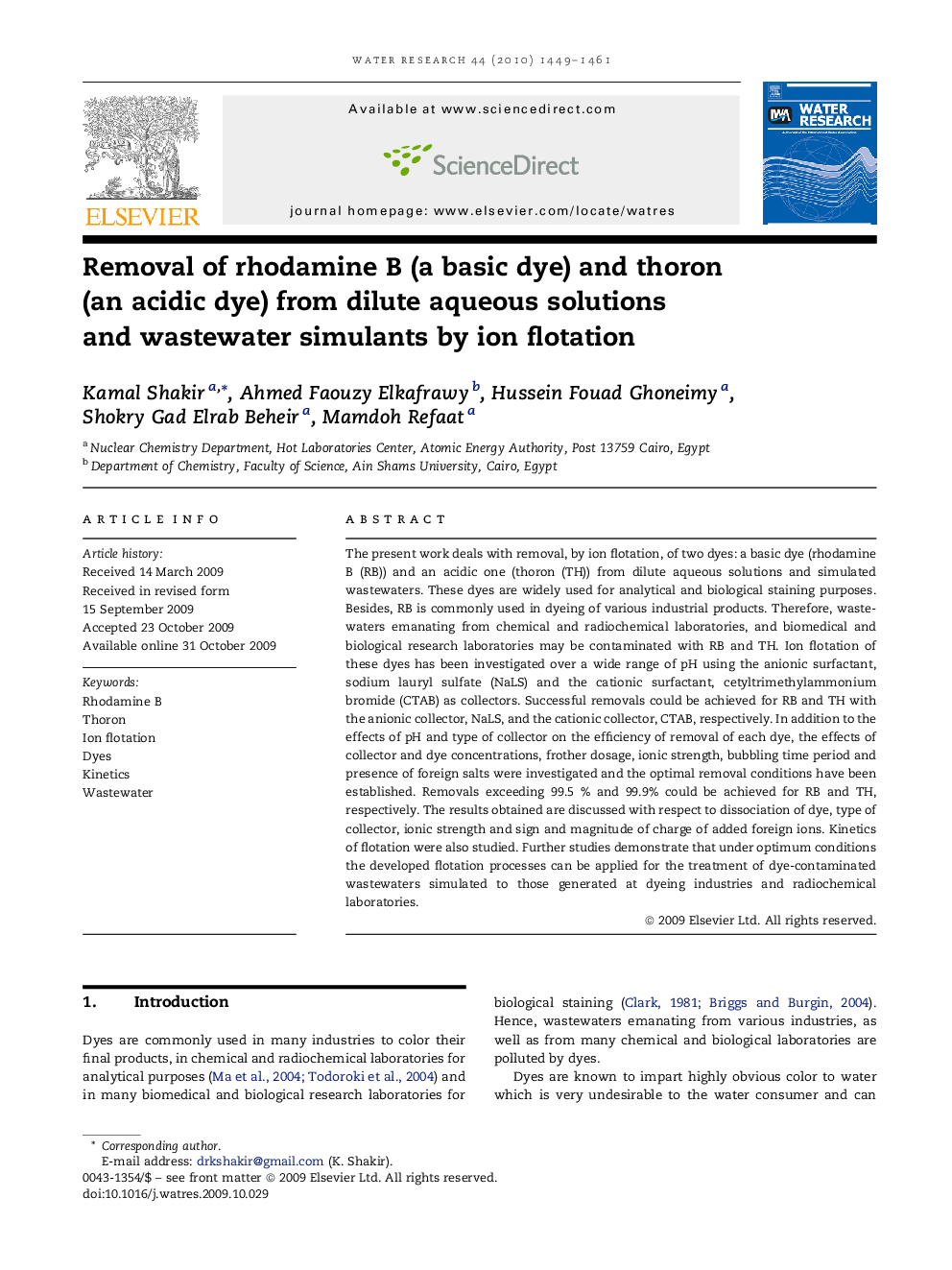| کد مقاله | کد نشریه | سال انتشار | مقاله انگلیسی | نسخه تمام متن |
|---|---|---|---|---|
| 4484282 | 1316915 | 2010 | 13 صفحه PDF | دانلود رایگان |

The present work deals with removal, by ion flotation, of two dyes: a basic dye (rhodamine B (RB)) and an acidic one (thoron (TH)) from dilute aqueous solutions and simulated wastewaters. These dyes are widely used for analytical and biological staining purposes. Besides, RB is commonly used in dyeing of various industrial products. Therefore, wastewaters emanating from chemical and radiochemical laboratories, and biomedical and biological research laboratories may be contaminated with RB and TH. Ion flotation of these dyes has been investigated over a wide range of pH using the anionic surfactant, sodium lauryl sulfate (NaLS) and the cationic surfactant, cetyltrimethylammonium bromide (CTAB) as collectors. Successful removals could be achieved for RB and TH with the anionic collector, NaLS, and the cationic collector, CTAB, respectively. In addition to the effects of pH and type of collector on the efficiency of removal of each dye, the effects of collector and dye concentrations, frother dosage, ionic strength, bubbling time period and presence of foreign salts were investigated and the optimal removal conditions have been established. Removals exceeding 99.5 % and 99.9% could be achieved for RB and TH, respectively. The results obtained are discussed with respect to dissociation of dye, type of collector, ionic strength and sign and magnitude of charge of added foreign ions. Kinetics of flotation were also studied. Further studies demonstrate that under optimum conditions the developed flotation processes can be applied for the treatment of dye-contaminated wastewaters simulated to those generated at dyeing industries and radiochemical laboratories.
Journal: Water Research - Volume 44, Issue 5, March 2010, Pages 1449–1461